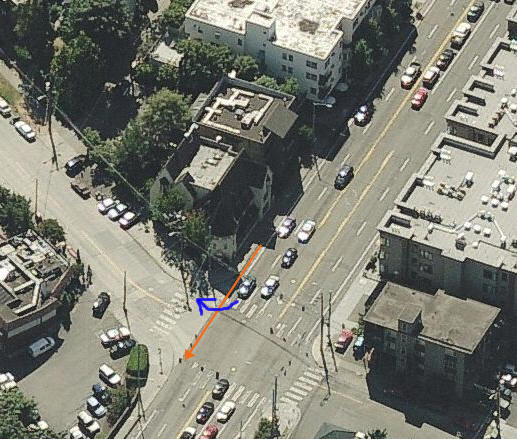Rack Building Basics — Making cross members
Most racks have some sort of cross member, straight tubing that goes across the rack platform. They are pretty easy to build.
One of the tricks is getting the two miters to be parallel to each other. I find it simplest to put some scrap metal in the miters and then eyeball them for parallel. You want to check early and often because you do want to be parallel when you have the tube the correct length. In this case you can see that I’m a little off:

It is important to clean the inside and outside of the metal before brazing.To clean the inside of the tubing I make a simple bit for the drill. This is a piece of 1/4″(or smaller)tubing with a slot cut in it to hold a small piece of shop cloth. Scraps of shop cloth are always somewhere on the workbench.

Support the tube in a vise and put the bit inside of it. The sand paper will remove any deposits on the metal and make for better joint.

Once you have the cross members cut, mitered, and cleanedyou need to lay them out. I find that it is best to number which position each one is in and draw alignment marks on the cross members and the rack. I measure to get even spacing across the rack, but use my eye to determine when they are parallel to each other and the sides of the rack. The rack platform may not be a true rectangle and it’s more important that everything look good than that everything is perfectly measured and square.

The rack is parallel to the ground and held in the vise after the last step. With everything laid out I tack each of the joints with a small blob of brass. I don’t use any clamps or fixtures for this, the cross members stay in place on their own. This isn’t the only possible option — Alistair likes to position the rack vertically and use clamps to prevent the stays from sliding down. Once everything is tacked I rotate the rack in the vise and make sure that the valley of each miter is pointing down. This lets me use gravity to flow the brass where I want it to go and to get the best fillet.

Once you’ve brazed everything on one side you flip the rack and do the other side.
































